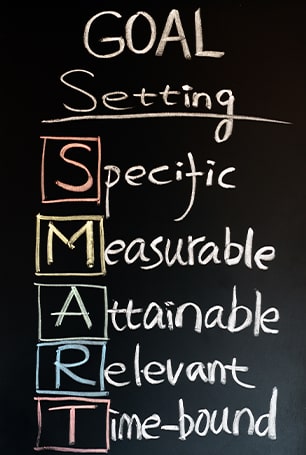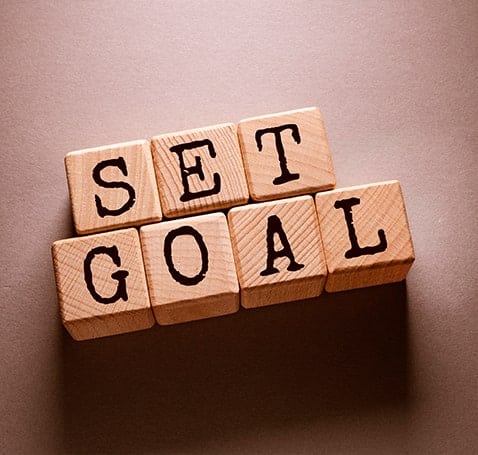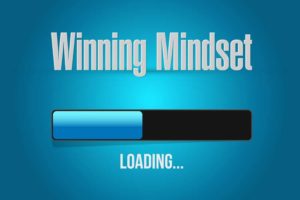
SMART Goal Setting for Teens
The SMART goal system was designed to give managers a better way to assist their employees in creating, defining, and measuring performance goals for an increased likelihood of success.
It’s broken up into five criteria points to guide the user through the acronym SMART, which stands for Specific, Measurable, Achievable, Relevant, and Time-Bound.
However, its usefulness is not limited to the workplace. The SMART system can be used for any goal you’re looking to achieve, whether for work, school, or something more personal, like weight loss and saving money, or whatever the goals for a teenager are.
It’s also not limited to workplaces so let’s look at how we can apply SMART goal setting for teens and students.
What Does SMART Goal Setting for Teens Stand for?
Specific
Create a clear definition of the goal. What do you need to accomplish it, and what steps will you take to complete it? First, define what you want to achieve.
- Who is required to perform the tasks to complete the goal? If you are working with a group of individuals, this is important to decide at the beginning.
- What is the goal, and what is needed to perform the tasks required to complete it?
- Where will the tasks take place?
- When does the goal need to be accomplished?
- Why is this goal important?
Measurable
What milestone events will you use to measure the goal? Will it be quantitative (numerical) or qualitative (observational)? e.g. Is this a goal you can measure with statistics, or is it something that is measured by observation, like graduating college?
Achievable (Attainable)
Do you currently have the ability, experience, and training to accomplish the goal? Available time is critical; make it something you can achieve in a determined amount of time. That way, you’ll have a better shot at completing the goal.
Relevant
Does this goal serve your overall objectives and idea of success? It’s easy to go overboard and get too ambitious when designing a SMART plan. Instead, focus on what is both realistic and doable. Ask yourself if completing this goal can lead to a more significant achievement, e.g., pay raise, higher grade point average, or add to your feelings of self-worth.
Time-Bound
When do you expect the goal to be completed? Set targets and checklists with specific dates and times to keep you on track. You can break down a large goal into smaller sub-goals by defining what tasks can be completed in the short-term, mid-term, and long-term. That way, you can assign the correct amount of time to accomplish each section of the larger goal properly.
Importance of Goal Setting for Students

Whether short-term or long-term, goals can be overwhelming to achieve. However, the task is made easier by implementing a system like SMART to create, accomplish, and measure them.
SMART goals for teens can include minor tasks, like setting a study schedule, or longer tasks, like organizing a major project, by using SMART goals to define the path to success.
Goals for a teenager could consider using the SMART system for class assignments, advancing skill levels, setting a plan to achieve a better grade, job promotion, and prioritizing mental and physical care.
SMART Goals Examples for Students
Mini Goal #1: I will spend an extra hour each week studying the subject with the lowest grade to increase my average to 80% or higher by the end of the term.
Mini Goal #2: I will set aside a half-hour every other day to practice yoga, learning three new poses. At the end of the month, I will have increased balance and flexibility.
Major Goal #1: To save enough money to visit Washington DC for two weeks
Specific: I want to save enough money to take a trip to Washington DC for two weeks before I begin college. The cost of the trip is $2,000.
Measurable: I will get a part-time job that will net a paycheck of $250 per week for the eight weeks of summer.
Attainable: I have retail experience and will apply for jobs that I can do over the summer to make enough money to pay for the trip.
Relevant: Visiting Washington DC will not only be a fantastic experience but an invaluable learning opportunity.
Time-Bound: I will create a plan to start the job by June 15th to work the full eight weeks before school starts.
Major Goal #2: To secure a job for summer break
Specific: I want to get a summer job that builds on my experience in the workplace while making enough money to put toward achieving my secondary goal of saving for a trip to Washington DC before I start college.
Measurable: I will send out fifteen resumes to local retail stores in my area, expecting to receive three to five interviews.
Attainable: I will target part-time retail jobs that I have the skills and experience to do and are open to hiring students on a limited-time basis.
Relevant: Many retail stores in my area hire qualified students part-time over the summer months, so with time and effort, I should be able to find several to apply to.
Time-Bound: I will set a deadline of the first week of May to send out the resumes with the expectation of receiving requests for interviews before the beginning of June. The expected start date for employment is June 15th.
Benefits of Using SMART Goals for a Teenager
- Creating tasks and making an organized plan to achieve your goals can increase motivation to succeed and provide a sense of self-satisfaction.
- Ensure that you can accomplish your ambitions without overburdening yourself and stretching yourself too thin.
- Become a forward-thinker, working today on what will lead to greater success tomorrow.
Methods to Track SMART Goals for Teens
- Digital methods: Web-based programs like Asana and Google Workspace that use a calendar app to schedule reminders, tasks and other trackers.
Checklists give you a sense of accomplishment and make a big goal more manageable when broken down into smaller steps. A quick online search and you can find a multitude of SMART goal templates to use to get you started. - Analog methods: Planners, bullet journals, whiteboards, and note cards placed in order of tasks needed to achieve a goal that can be easily moved if required.
Don’t Give Up
There are as many ways to achieve a goal as there are people. We are all unique and come at a goal with different skills sets, mindsets, and circumstances, all of which will affect how each individual will create a plan to complete the objective.
Don’t let goal setting intimidate you. No matter the type of goal or the level of difficulty, you can use the SMART goal method to motivate you to succeed. SMART goal setting for teens takes practice and isn’t developed overnight.
Take the time to think and reflect on your teen goals and results, as this will be a learning process.
You may not get the choice of which goal you have to achieve, but you have the choice to complete it well. It may seem overwhelming at first, but breaking down the steps into smaller ones can ease the stress of achieving an important goal and increase your motivation level.
Give yourself the space to fail or stumble along the way. Review your goal and revise the section that needs tweaking. Do you need to increase your skills? Better allocate your time?
Rethink your overall purpose, figure out which part didn’t work, and start the SMART goal process again. Goals for a teenager will evolve, and so will the goal-setting process.
Don’t stop goal-setting as a teen and the results will only get better.
By: Robert Puharich | November 12, 2021 |






Nice Blog!
Pingback: Growth Mindset for Teens - Teen Learner